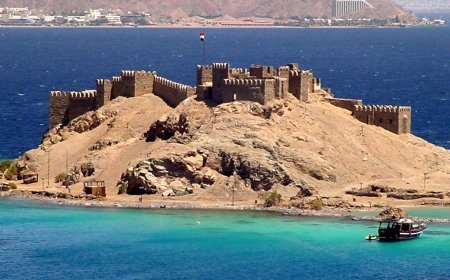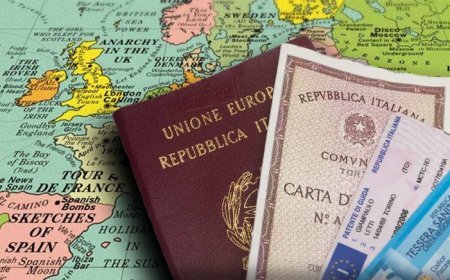Heat waves in Europe are getting more dangerous. Here’s what that means for travelers

But when the 21-year-old visited Athens in mid-June with her friends she was shocked by the “unbearable” 98 Fahrenheit (37 Celsius) heat she faced. “I actually had no idea about the heat that was going on until we were there, which was pretty surprising,” she told CNN.
“I always joke around that I have such a high heat tolerance; I bring my sweatshirt with me to class in August (in the US),” she said.
But the apartment she was staying in had no air conditioning and temperatures were too high during the day to explore the city on foot. “Our energy levels were lower than we thought they would be,” she said. “It felt pretty unbearable to walk in the direct heat.”
Climate crisis-driven sweltering summers in Europe are now a reality that many tourists are waking up to. Interest in visiting hotter Mediterranean countries dropped in 2023 amid record heatwaves and wildfires, with more temperate destinations becoming increasingly popular, experts say.
Recent heat-fueled deaths and disappearances in Greece, including that of the British TV personality Michael Mosley, have the potential to further fuel this northward shift, as incidents of extreme heat influence vacation decisions.
The degree to which the travel industry and tourists alike can adapt to the rising tide of climate impacts is becoming a bigger issue for countries in southern Europe, many of which rely on tourism to boost their economies.
Night shift
The recent high temperatures have brought the climate crisis into sharp focus for some European vacationers.
“The climate crisis that we’ve been fearing will happen in 10 or 15 years is already here in some parts of the world. That’s the scary part,” Roo Clark, 28, from Suffolk in eastern England, who is currently staying with his girlfriend on the Greek island of Skyros, told CNN.
“Five years ago, me and my friends wouldn’t have even spoken about it (climate change), whereas now it’s more of a conversation.”
Authorities in Greece have repeatedly warned tourists not to underestimate the intense heat, especially during the middle of the day. Hiking in high temperatures has been a common thread linking recent deaths in the country.
Temperatures in Greece are forecast to be between 90 and 95 degrees Fahrenheit (low- to mid-30s in Celsius) over the next couple of weeks, a few degrees above summer average, according to CNN meteorologists, except for one to two days when rain is forecast, which will keep temperatures down.
Stefanos Sidiropoulos, who runs Greece’s largest travel agency specializing in outdoor activities, said tourists shouldn’t jump straight into activities. “People that are coming from north Europe, or from Canada, places with colder temperatures, it’s more difficult for them. They need time to adapt to these conditions,” he told CNN.
Sidiropoulos’ travel agency, Trekking Hellas, now offers some activities when temperatures are lower, such as during sunrise and sunset hours. “Or at night, with torches,” he adds.
Hooked on tourism
Climate change’s influence on where tourists are taking their vacations will have serious repercussions for some countries dependent on income from travelers.
In Greece, tourism contributes nearly 38 billion euros ($41 billion) – around 20 percent of the country’s entire economy, according to the World Travel and Tourism Council.
In Italy, where level three heat alerts — the highest warning —have recently been issued for the cities of Rome, Perugia and Palermo, tourism represents 10 percent of the country’s economy, according to the latest figures, with one in every eight jobs linked to the industry.

Following Europe’s 2023 summer heat wave, which saw thousands flee from wildfires on the Greek island of Rhodes, there was a seven percent rise in expression of concerns about climate change among European travelers, according to the European Travel Commission (ETC), a nonprofit association responsible for the promotion of Europe as a travel destination.
This followed a decline in interest in southern Mediterranean vacation locations between the summers of 2022 and 2023, with cooler destinations like the Czech Republic, Bulgaria and Denmark becoming more appealing, ETC told CNN.
“Travelers are increasingly aware of extreme weather events and their potential impact on their vacations,” Eduardo Santander, CEO of ETC, told CNN, adding that in the future this could cause more travelers to visit southern Europe during spring and late fall instead of during the hotter summer months.
For now, Santander said that tourist concerns about climate change tend to be relatively short-lived. “Travelers are concerned after the summer but tend to forget about those events when booking their next holidays in spring,” he said.
‘Riddled with bites’

Extreme heat is one consequence of climate change impacting tourist hot spots across Europe. But there are others.
Warmer conditions caused by climate change are pushing populations of disease-transmitting mosquitoes into new areas of Europe, according to the European Centre for Disease Prevention and Control (ECDC).
Clark, the tourist currently staying on Skyros, said that the number of mosquitoes was very high during the heat wave in early June.
“We were absolutely riddled with bites. There was no wind and even though we sprayed ourselves they still found a way,” Clark told CNN. “It was definitely the low winds and high temperatures that was causing it.”
One key species of mosquito that can spread dengue, chikungunya, and Zika viruses, called Aedes albopictus, is now established in many European countries, including Greece, Italy, Portugal and Spain, according to ECDC.
Andrea Ammon, ECDC director, said travel can contribute to the expansion of the species’ reach. “Increased international travel from dengue-endemic countries will also increase the risk of imported cases,” she said in a statement.
Last year, ECDC recorded 130 locally acquired cases of dengue in Europe, up from 71 cases in 2022.
There have been no locally acquired dengue cases reported in Europe so far this summer, ECDC told CNN, but based on previous summer trends they expect the first cases to be reported in the coming weeks.
One human case of West Nile virus infection, spread by the native Culex pipiens mosquito, was reported in Spain’s Seville province in March, according to ECDC. Last year, the organization recorded 713 locally acquired human cases of West Nile virus infection in nine EU countries, resulting in 67 deaths.
Adapting to the ‘new normal’

Last summer’s record-breaking temperatures across the globe were driven by a mix of human-caused climate change and the return of the natural , El Niño phenomenon, which brings warmer global temperatures.
This combination raised temperatures to record levels in parts of Europe, the planet’s fastest- warming continent.
But even as the impact of El Niño reduces, experts say that the long-term trend of global warming will continue. “Climate change is tilting the odds in favor of more extreme events happening more frequently, and then becoming more severe,” Rebecca Carter, director of climate adaptation and resilience at the World Resources Institute, told CNN.
She added that high tourist numbers in some regions of Europe were putting already hard-pressed local authorities under pressure, as they juggle the need to keep residents safe from high heat as well as protecting visitors.
Carter said that the travel industry needs to consider climate adaptation. “It’s something I don’t think the travel industry is thinking about as much as it should,” she said, adding that booking rules could be made more flexible for flights and hotels, for example.
“When people plan these trips, it’s weeks or months in advance and you can’t predict when a specific place is going to have extreme heat.”
Some tourists, such as parents whose children are at school, have less flexibility when deciding travel plans, Carter said. In these circumstances, she said planning was key: “What would you do if there was an extreme heat wave, and the power was out? Can you map out in advance where you would go for help?”
Sidiropoulos from Trekking Hellas agreed that forward planning was important, but he was keen for visitors to still get out and enjoy the beauty of Greece’s culture and natural world.
“I always say to people who are travelling, ‘don’t stay in your hotel and just do the classic things like go to a restaurant,’” he said. “You have the opportunity to see nature … and to see the authentic side of our country.”
The post Heat waves in Europe are getting more dangerous. Here’s what that means for travelers appeared first on Egypt Independent.
What's Your Reaction?
 Like
0
Like
0
 Dislike
0
Dislike
0
 Love
0
Love
0
 Funny
0
Funny
0
 Angry
0
Angry
0
 Sad
0
Sad
0
 Wow
0
Wow
0





















































